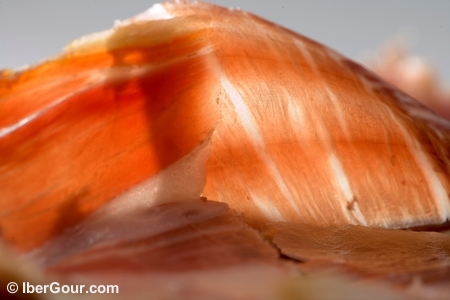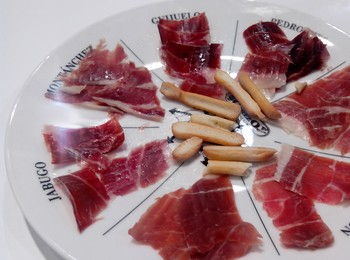The term Reserva has two meanings when it comes to ham, either pata negra or serrano. The main and most common meaning is that it has a long maturation in the cellar (bodega). Royal Decree 474/2014 regulates the use of this term, but it’s not really quality assurance (as formerly went under the name Pata Negra a few … read the rest
Author: M. Nieto Gallardo
6 Reasons that Pata Negra Jamón de Bellota Increases the Appetite

It is unusual for a customer to explain why they buy jamón de bellota. We mostly assume it is simply because Pata Negra is great. But there are several customers who have told us that they buy ham because of how little they feel hungry and it helps them to boost their appetite.
For most of us gluttony is a … read the rest
11 reasons for the Price difference in Bellota hams
We can find Iberian jamón de bellota for less than €40/kg and for more than €400/kg. It’s a huge difference which is not justified solely by the quality of the final product, but a combination of different factors.
1. Breed
Better quality Pata Negra hams come from 100% Iberian pigs, which cost to raise is significantly higher than cross-breeds. They … read the rest
Simple recipe for making broth with a pata negra ham bone
Your pata negra ham may have nothing left to give but you can still do things with it, like making a delicious consommé or a flavorful sauce for a meat dish. The bone marrow and the bits of meat you can’t cut off the bone are tasty and nutritious (vitamins, minerals, essential fatty acids and more). Here is how to … read the rest
Is Bellota ham produced outside of the Iberian peninsula?
In practice we can see that jamón de bellota is only produced in Spain and Portugal, but this has not always been the case and perhaps it won’t be in the future either.
Pigs are eating acorns in the forests bordering the Mediterranean Sea long before it was domesticated by humans. The oaks in drier region and the cork … read the rest
Umami: the taste of something indescribably delicious, like Pata Negra
More than one would draw a blank when challenged to explain Iberian ham, what it tastes like and what it can be compared with to somebody unfamiliar with it. If asking an ordinary citizen to describe its flavour following his gustatory experience, the safest would be to make reference to the lightly salty touch, to cured meat and to nuts. … read the rest
How to choose a ham holder for a Jamon Pata Negra
The other day my friend Isabel told me that at home only her sister cuts the Pata Negra. Not her father or her mother or her grandfather… only her sister was brave enough to face the pig’s leg. They aren’t actually afraid of the knife, but the reproaches they’d receive from other diners: it’s sliced too thick, too thin, don’t … read the rest
Swineherds of Iberian pig
Although traditionally pigs have always been reared in pens of a few square metres, zones with an abundance of acorns have also been very common grazing areas for pigs in the fall, coinciding with the falling of the fruit of the oak.
It was an inexpensive way to fatten the animals. There were thousands of hectares of pastures in Extremadura… read the rest
Why doesn’t a good Pata Negra ham taste salty?
 If you are asked which is saltier, a slice of Iberian jamón de bellota or a crisp? The answer will almost always be the crisp. Moreover, if I ask you to first try a sample of each, the answer wouldn’t change.
If you are asked which is saltier, a slice of Iberian jamón de bellota or a crisp? The answer will almost always be the crisp. Moreover, if I ask you to first try a sample of each, the answer wouldn’t change.
The reality is very different: a bag of crisps typically contains 1.5g of salt per 100g of potatoes, … read the rest
The additives in Pata Negra ham
Until recently, what worried consumers most was the salt content of cured ham. WHO (World Health Organisation) recommends consuming a maximum of 5 grams per day (even less in children and adolescents) to reduce the risk of cardiovascular disease, although the world average of between 9 and 12g is more than double.
These days it seems that other additives used … read the rest
